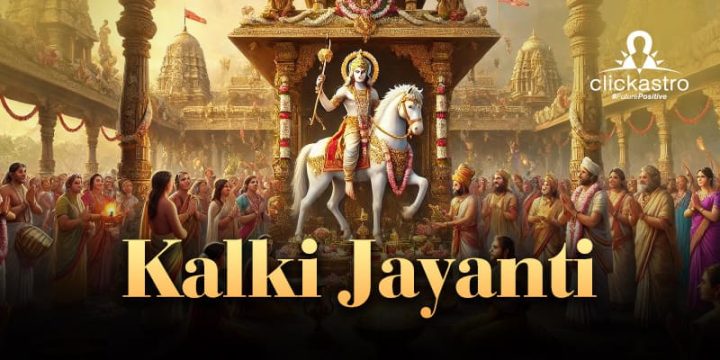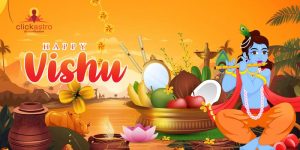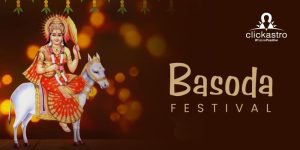Kalki Jayanti is an important
Hindu festival that celebrates the anticipated arrival of Kalki, the tenth and final avatar of Lord Vishnu.
In 2024, Kalki Jayanti is on Saturday, August 10.
According to Hindu mythology, the arrival of Kalki is believed to mark the end of the current era, known as Kali Yuga, characterized by darkness, discord, and moral decline. Kalki will appear to restore righteousness (Dharma) and initiate a new era of truth and virtue, the Satya Yuga. Kalki Jayanti not only underscores the cyclical nature of time but also exists as a hope of renewal for devotees.
Kalki Jayanti is celebrated on the sixth day of the Shukla Paksha of Shravan month. It involves various spiritual rituals, including fasting, chanting, and charitable acts, all aimed at seeking the blessings of Lord Vishnu and preparing for the divine intervention that promises to cleanse the world of evil and re-establish moral order.
The Significance of Kalki Jayanti
The significance of Kalki Jayanti lies in its connection to the end times and the renewal of cosmic order. According to the Srimad Bhagavatam, Kalki is recognized as the tenth incarnation of Lord Vishnu, destined to appear after the current age, Kali Yuga, characterized by moral decay and spiritual decline. Kalki’s arrival is prophesied to occur approximately 427,000 years from now.
Born in the
mystical village of Shambhala to a devoted Brahmin named Vishnuyasha, Kalki is expected to emerge as a divine warrior. Mounted on a magnificent white horse named Devadatta, Kalki will wield a shining sword, symbolizing the eradication of evil and the restoration of righteousness (Dharma). His mission is to vanquish all malevolent and disloyal kings and leaders, purging the world of corruption and paving the way for a new era of truth and virtue, the Satya Yuga.
The anticipation of Kalki’s arrival infuses the festival with deep spiritual significance. Devotees see Kalki Jayanti as a reminder of the eternal battle between good and evil and the ultimate triumph of virtue. It underscores the hope for a future where Dharma prevails, and peace and justice are restored, reflecting the cyclical nature of time and cosmic balance.
Rituals and Observances
Kalki Jayanti, observed on the sixth day of the bright fortnight of the Shravan month, is marked by various rituals and observances. This festival is celebrated with a range of devout practices aimed at seeking divine blessings and spiritual purification.
Fasting
Fasting is a central aspect of Kalki Jayanti. Devotees observe a day-long fast to attain spiritual purity and to seek the blessings of Lord Vishnu. The act of fasting is seen as a means of cleansing the body and mind, fostering a sense of discipline and devotion.
Puja and Chanting
The day begins with a purifying bath, symbolizing the washing away of sins and impurities. This is followed by the chanting of the Beej mantra, Vishnu Sahasranama, and other sacred mantras 108 times. The repetition of these mantras is believed to invoke the divine presence of Lord Vishnu and to fill the devotee’s surroundings with spiritual energy.
Offerings
During the puja, the idol of Lord Vishnu is cleansed with water and Panchamrit, a mixture of milk, curd, honey, ghee, and sugar, symbolizing the purity and sanctity of the deity. Devotees offer flowers, lamps, and incense, creating an atmosphere of reverence and devotion. These offerings signify the devotee’s love and respect for the deity.
Charity
Acts of charity are also an important part of Kalki Jayanti observances. Devotees donate food to Brahmins and the needy, reflecting the festival’s spirit of compassion and generosity. This act of giving is seen as a way to earn divine favour and to ensure that the blessings of Lord Vishnu are shared with the less fortunate.
Spiritual Practices
In addition to the formal rituals, devotees engage in various spiritual practices throughout the day. These include meditative exercises and maintaining a state of peace, calm, and openness to receive the divine energies from Lord Kalki. Devotees strive to be mentally and spiritually prepared, making resolutions and affirmations that align with the principles of Dharma (righteousness) and personal growth.
Astrological and Cultural Significance
Kalki Jayanti’s timing is intricately linked to astrological calculations, where the most auspicious moments for performing rituals are determined by analyzing the
positions of planets and the phases of the moon. This alignment of planets is believed to amplify the spiritual efficacy of the rituals, ensuring that devotees can receive maximum divine blessings and positive energy on this sacred day.
The story of Kalki transcends mythology and offers deep philosophical insights that resonate within the cultural fabric of humankind. Kalki’s narrative embodies the cyclical nature of time, emphasizing the inevitability of change and the continuous process of renewal and transformation. It reflects the divine law that illustrates how every phase of decline (Kali Yuga) must ultimately give way to a period of renewal and righteousness (Satya Yuga).
Kalki’s prophesied arrival represents the ultimate triumph of good over evil, a theme that is central to many cultural and religious traditions. This avatar of Vishnu symbolizes hope and renewal, assuring believers that no matter how dire the circumstances, divine intervention will restore balance and justice. This concept resonates with the universal human desire for justice, moral order, and a better world.
Culturally, the story of Kalki serves as a reminder of the importance of adhering to Dharma (righteousness) and maintaining faith in the face of adversity. It inspires individuals to strive for moral and ethical living, with the hope that their efforts will contribute to the larger power. The celebration of Kalki Jayanti thus becomes not only a religious observance but also a cultural reaffirmation of the values of hope, justice, and the perpetual quest for a harmonious world.
The Feminine Aspect of Kalki
Kalki’s story is not only about his prophesied role as a divine warrior but also emphasizes the importance of feminine energy, represented through his consorts. These consorts symbolize various aspects of divine energy that are crucial for Kalki’s mission to restore Dharma and cosmic balance. Each wife embodies a distinct quality or virtue, reflecting the multifaceted nature of divine intervention required to combat the forces of evil and darkness in the Kali Yuga.
The interplay between masculine and feminine energies in Kalki’s narrative underscores the fundamental balance necessary for maintaining cosmic harmony. Kalki, as the masculine force, represents action, the destruction of evil, and the re-establishment of righteousness. Meanwhile, his consorts, embodying Shakti or divine feminine power, represent the nurturing, sustaining, and creative forces of the universe. This synergy between the masculine and feminine is essential, as it highlights that both energies must work in tandem to achieve true harmony and balance.
Shakti, or divine feminine power, plays a pivotal role in Hindu mythology and is central to understanding Kalki’s story. Shakti is the dynamic force that animates the universe, driving creation, preservation, and destruction. In the context of Kalki’s narrative, Shakti’s presence signifies the empowerment and support necessary for Kalki to fulfil his divine mission. It symbolizes the active, transformative energy that complements Kalki’s role, ensuring that the restoration of Dharma is holistic and all-encompassing.
This profound symbolism of Shakti in Kalki’s story serves as a reminder of the integral role of feminine energy in the divine order. It emphasizes that true harmony can only be achieved through the balanced interplay of both masculine and feminine forces, reflecting a universal principle that transcends religious and cultural boundaries.
Modern Relevance and Cultural Impact
Kalki Jayanti holds significant relevance in modern society, symbolizing the enduring quest for truth, justice, and spiritual renewal. In a world often fraught with turmoil and moral ambiguity, the story of Kalki serves as a powerful reminder of the cyclical nature of time and the eventual triumph of good over evil. This festival encourages individuals to reflect on their actions, seek spiritual growth, and align themselves with the cosmic principles of Dharma (righteousness) and Satya (truth).
The narrative of Kalki has influenced art, literature, and media, showcasing its adaptability and enduring appeal. Paintings and sculptures depicting Kalki’s anticipated arrival on a white horse, wielding a sword of righteousness, are common in Hindu iconography. Literary works and modern media, including films and television series, have drawn inspiration from the themes of divine intervention and the restoration of order associated with Kalki.
In contemporary times, Kalki Jayanti serves as a source of inspiration and hope, reinforcing the belief in a future where justice prevails and balance is restored. It encourages communities to come together, engage in acts of charity, and participate in rituals that foster spiritual well-being. By celebrating Kalki Jayanti, devotees reaffirm their commitment to upholding righteousness and contributing to a more just and harmonious world.
Conclusion
In conclusion, Kalki Jayanti is a celebration that anticipates the divine intervention of Lord Vishnu’s final avatar, Kalki. This festival embodies the hope for a future where righteousness prevails, and balance is restored. The rituals observed during Kalki Jayanti, such as fasting, puja, chanting, and charitable acts, foster spiritual purity and devotion among followers. The festival’s rich philosophical insights emphasize the cyclical nature of time and the eventual triumph of good over evil, resonating deeply with universal human values.
Additionally, Kalki’s narrative and the celebration of his anticipated arrival have significantly influenced art, literature, and media, showcasing its timeless relevance and cultural impact. By observing Kalki Jayanti, devotees are inspired and guided towards a path of virtue, justice, and spiritual enlightenment, making this festival a meaningful and enduring part of Hindu tradition.








